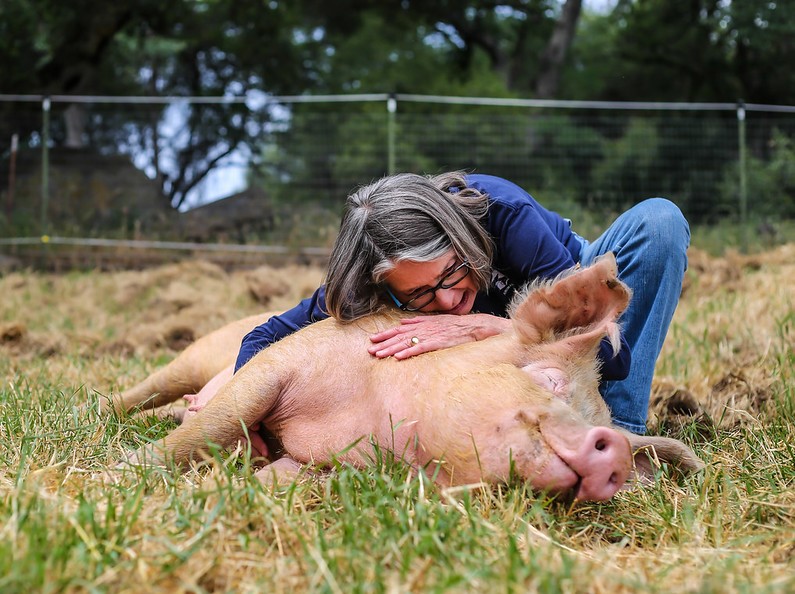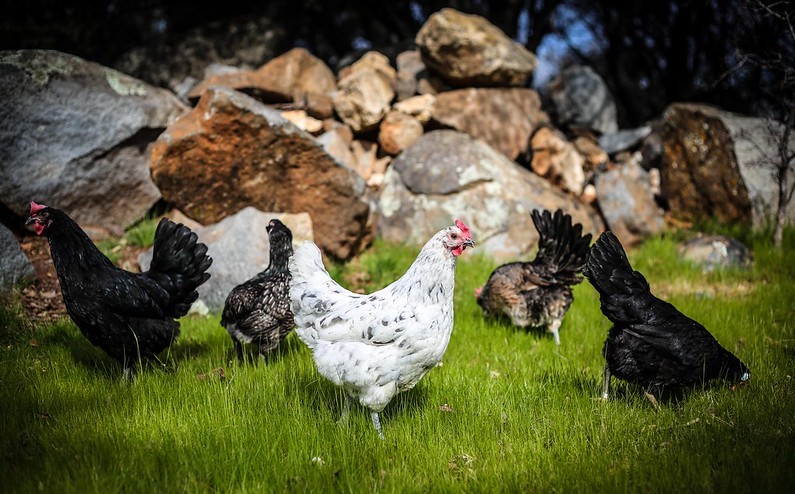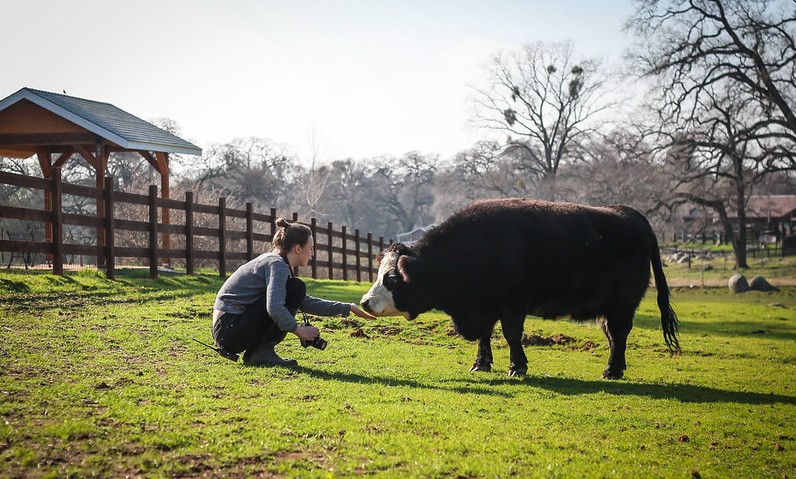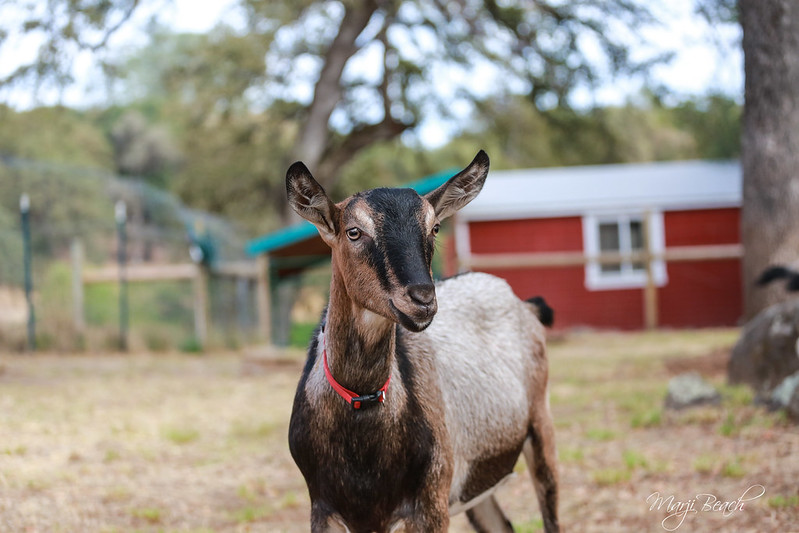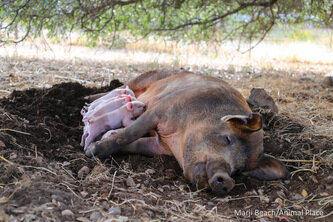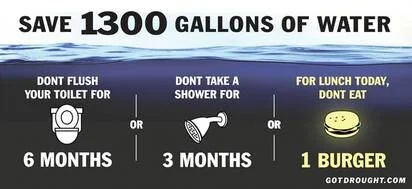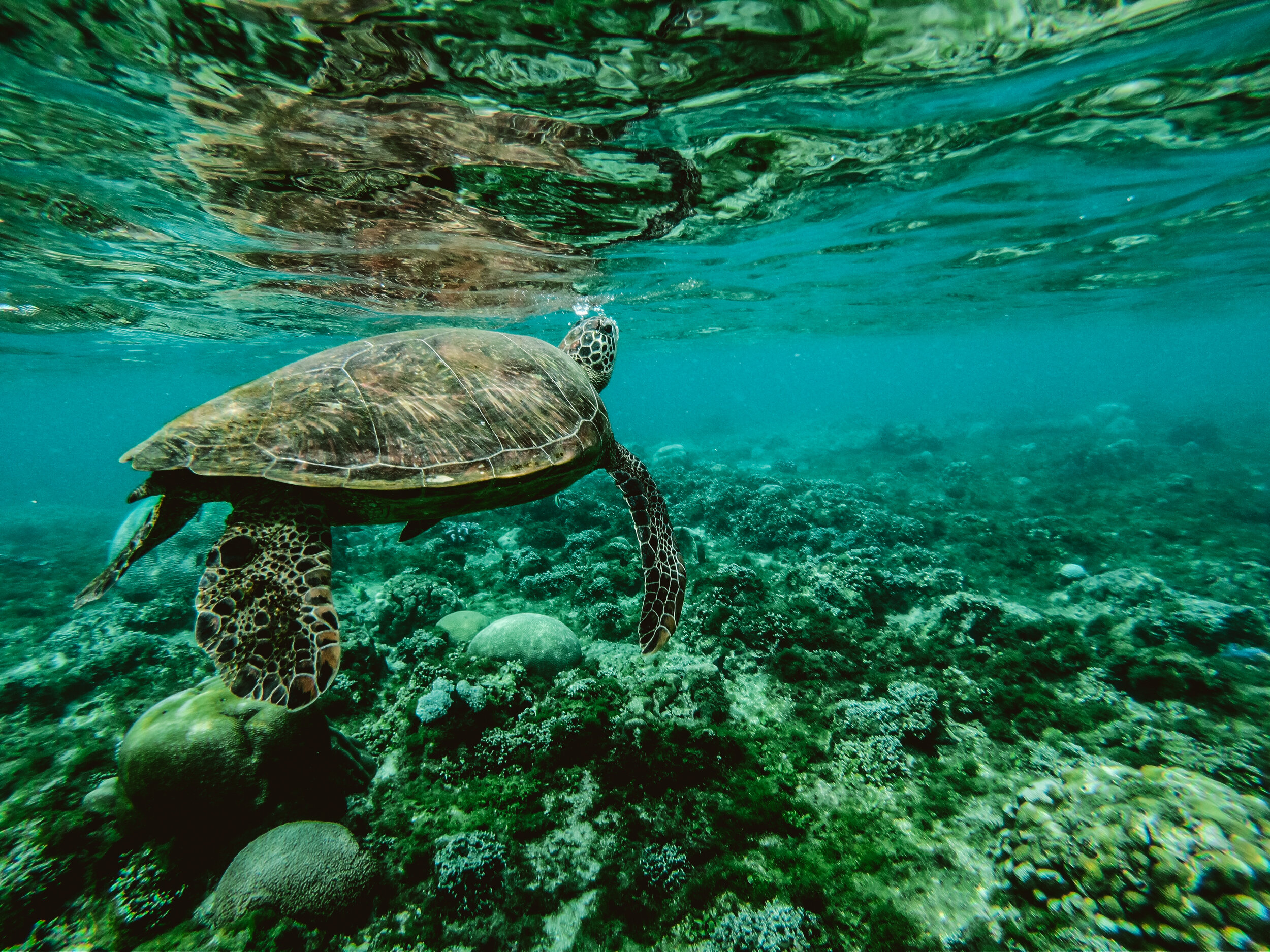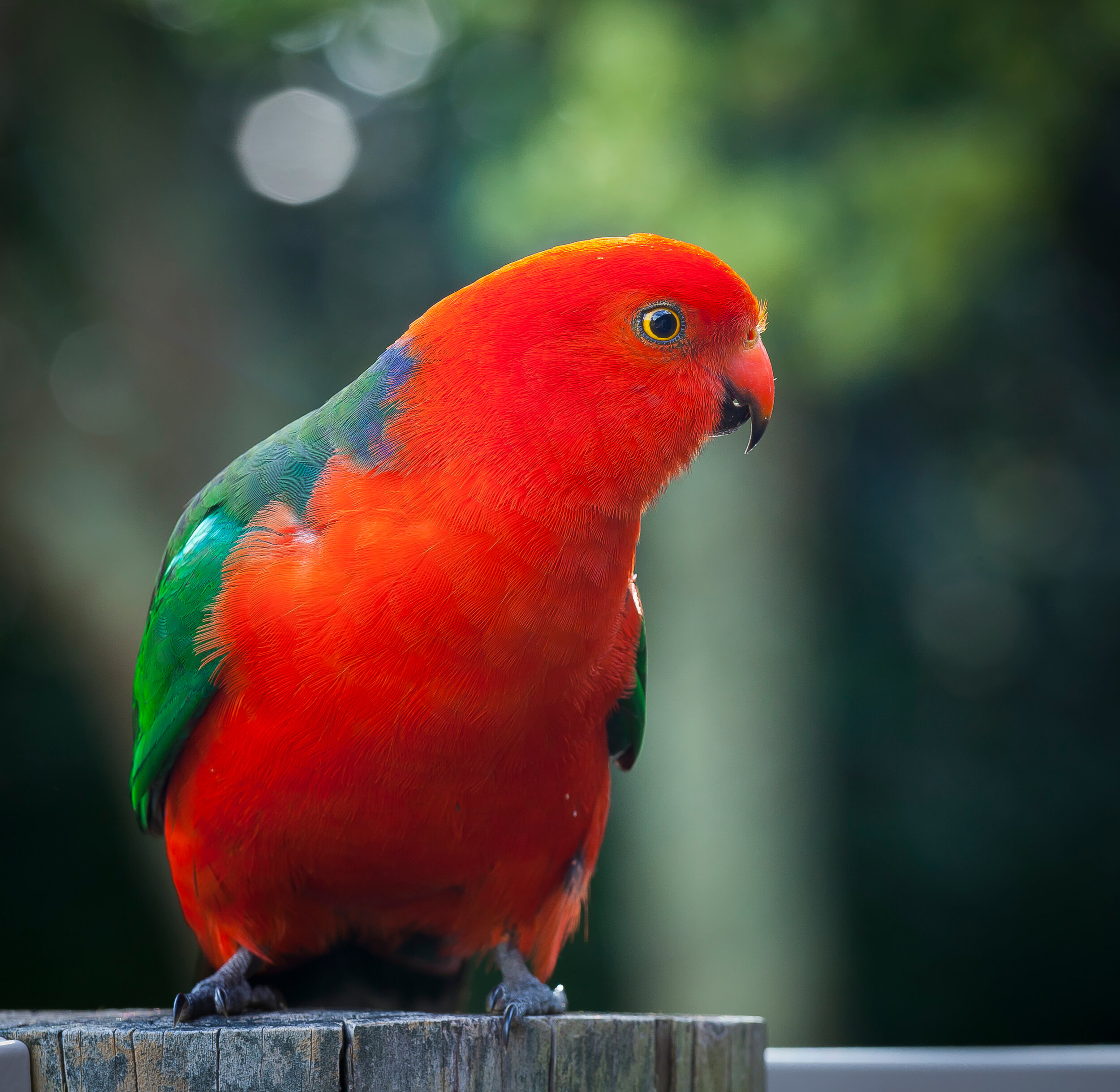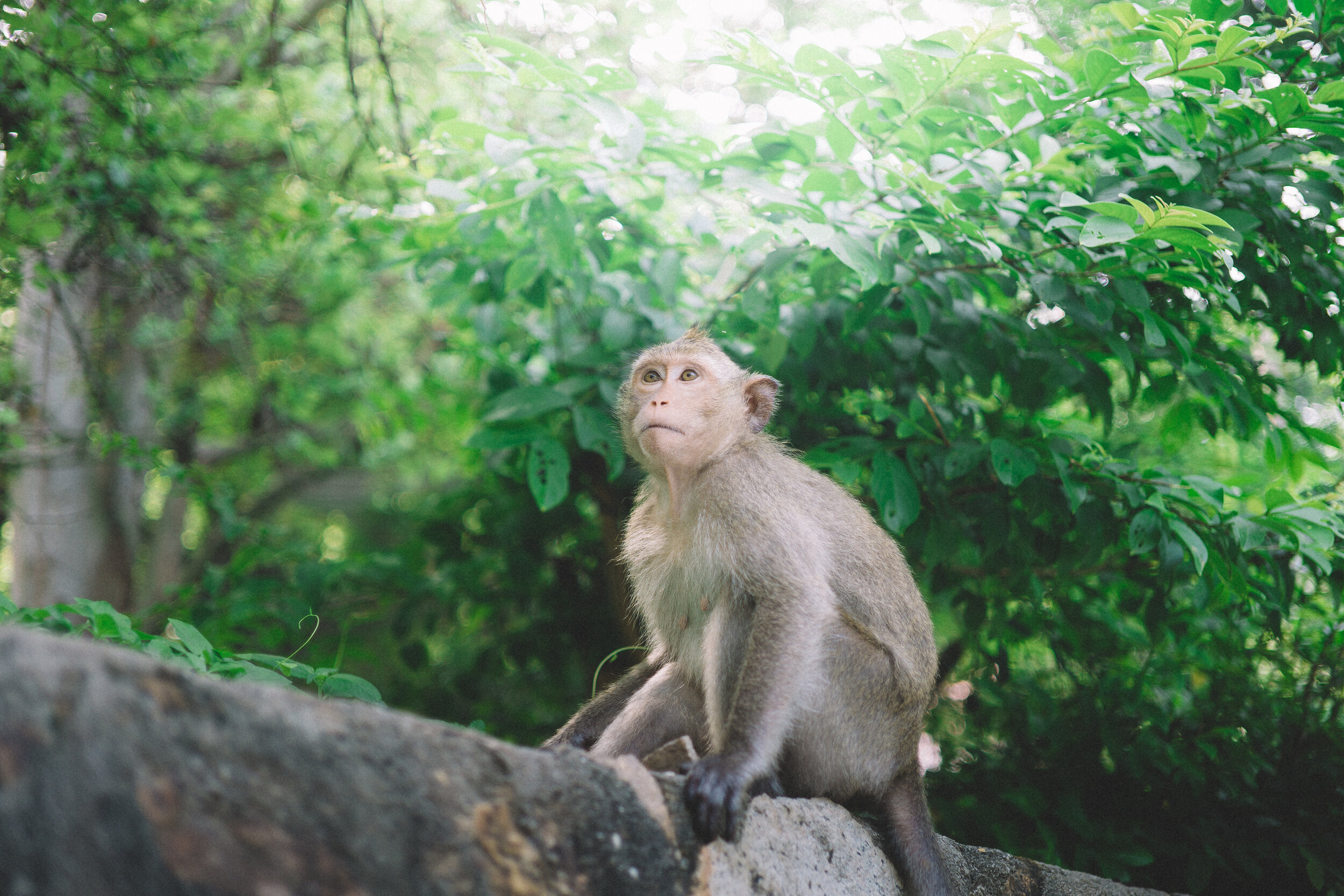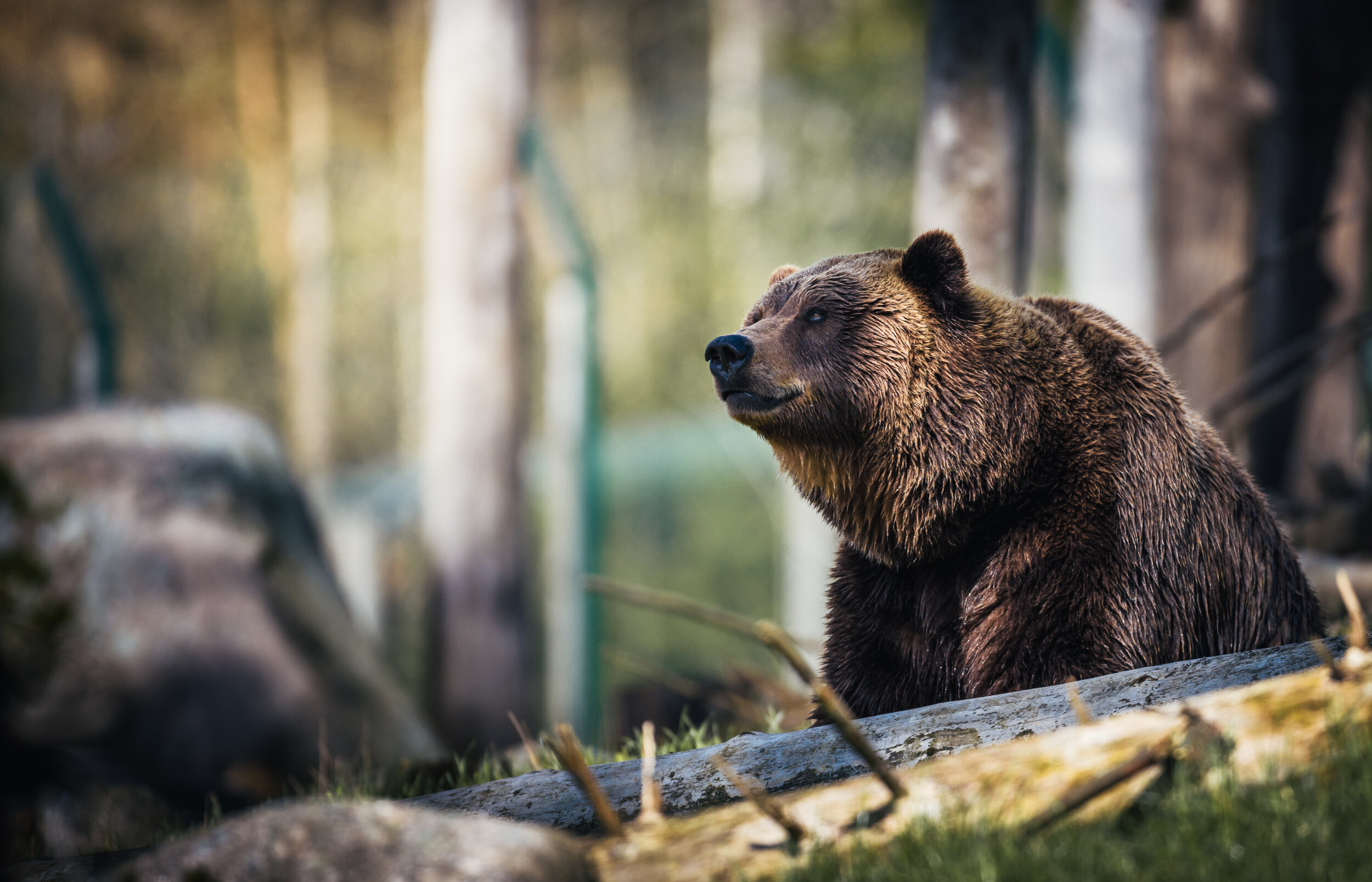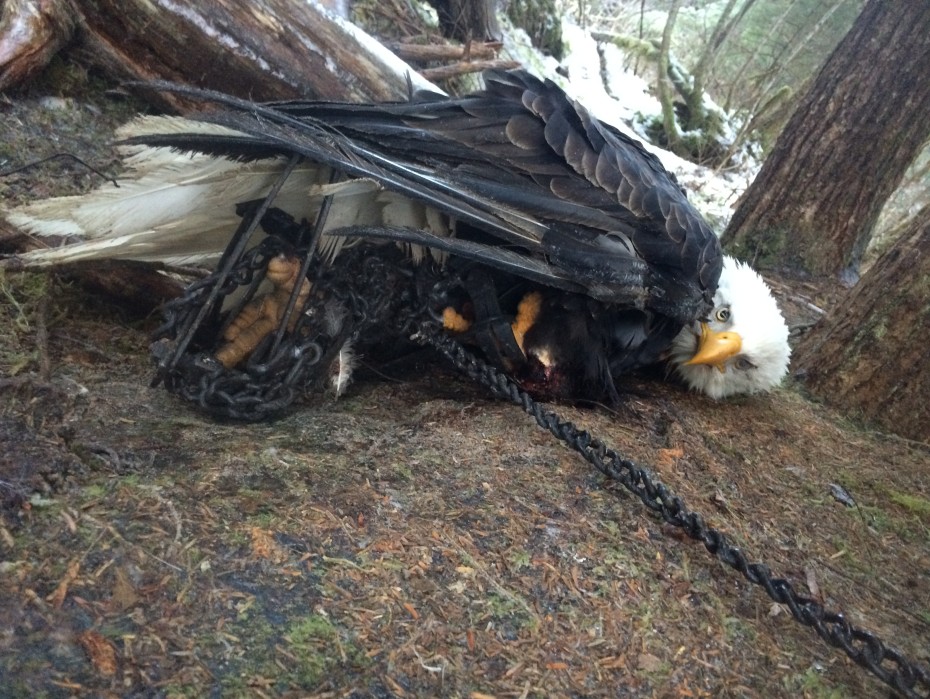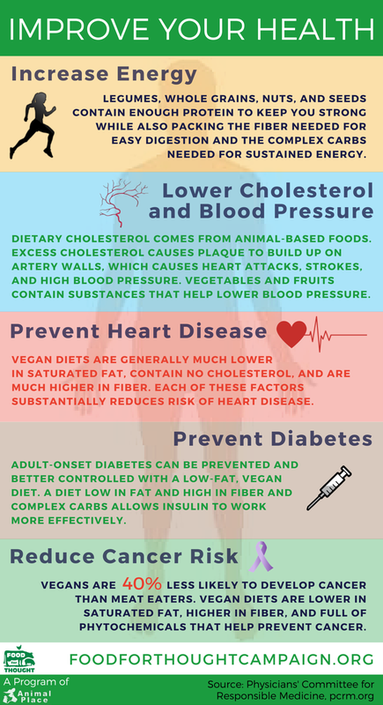
WHY PLANT-BASED
Raising animals for food exploits animals and workers, harms wildlife, negatively impacts human health, and is one of the leading causes of climate change and species extinction.
For Farmed Animals
Nonhuman animals are amazing! We open our hearts and homes to animals in need and enrich each other’s lives immensely. Most of us want to see animals happy and free from suffering.
Over 98% of the animals that suffer and die at the hands of humans are farmed animals [1]. Many species have been consumed historically, but they are no different in their capacity to feel joy, pain, and fear than the animals with whom we share our homes. Cows, rabbits, chickens, pigs, and other species suffer immensely on farms—often far worse and in far greater numbers than dogs and cats. They deserve our consideration, too.
EATING ANIMAL PRODUCTS ALWAYS CAUSES SUFFERING
Dairy Calves. Photo by Strange Biology from Flickr.
Debeaked hen. Photo by Marji Beach.
Mammals such as cows, pigs, goats, and sheep are bred through forced insemination, while birds such as chickens and turkeys are confined in sheds and bred excessively. Familial bonds are broken, and mothers will often be separated from their young shortly after birth, or may never get to meet them at all.
Animal products claiming to be “organic,” “cage-free,” “free-range,” “certified humane,” and “natural” still involve extremely inhumane practices. This includes
Debeaking
Tail-docking
Branding
Ear clipping
Castration without pain relief
Reproductive manipulation
The separation of mothers from young
The temporary starvation of egg-laying hens to force them to start
There is no humane way to breed and kill animals.
All animals raised for their flesh, milk, or eggs are killed at a small fraction of their natural lifespans. Chickens killed for their flesh are killed at about 6 weeks old, while their natural lifespan is 7-10 years [2]. Dairy cows are killed at 3-5 years old when their milk production wanes; their natural lifespan
is 15-20 years [3, 4].
Meat Slaughterhouse. Photo by Jai79 from Pixabay.
WHY LOVE ONE BUT EAT THE OTHER?
“The idea that some lives matter less
is the root of all that is wrong
with the world.”
Sentience
All animals are sentient. They feel, perceive, and want to avoid suffering. All animals, including fish, have complex nervous systems that allow them to feel pain and pleasure. Nonhuman animals are more like us than not.
INTELLIGENCE
Pigs score higher on some intelligence tests than dogs [5]. Chickens can do basic math [6]. Fish cooperate with each other to inspect predators as a team [7]. But regardless of how different species measure up to human categories of intelligence, all animals are perfectly adapted for the needs of their species. A chicken is perfect at being a chicken, just as a dog is perfect at being a dog.
SELECTIVE COMPASSION
For some, the pigs and chickens that are commonly served for dinner are family companions just like cats and dogs.
Everyone can be part of the change to end selective compassion by considering all animals in organizational policies.
THE PARADOX OF "HUMANE" FARMING
The desire for the improved treatment of farmed animals is based on the idea that it is wrong to subject animals to unnecessary harm. Yet, killing animals that we do not need to eat is the ultimate act of unnecessary harm.
“The slaughtering of an animal is a bloody and violent act,
and death does not come easy for those who want to live.”
The easiest and most effective way to help animals is to stop eating them and their products. As an organization dedicated to protecting animals, you have an incredible opportunity to amplify your mission and broaden your impact by leaving animals off the plate at your events.
for the Environment
Climate Change
Cattle Feedlot. Photo by skeeze from Pixabay.
Meat production is a major contributor to global warming. Rising temperatures alter habitats, reduce food sources, and cause drought.
Approximately 18% of annual worldwide greenhouse gas (GHG) emissions are attributable to livestock [1], with livestock and their byproducts accounting for at least 51% of annual worldwide GHG emissions [2]. Either estimate is more than the entire transportation sector combined. Additionally, cattle in the United States are responsible for a large percentage of the country’s methane emissions, which is more destructive than CO2. In addition to directly contributing to climate change, the production and delivery of meat helps to drive up the use of carbon-rich fuels [3, 9].
Nearly half the landmass of the United States lower 48 states (149 million acres) is used to grow feed for food animals—creating an even bigger carbon footprint than GHG emissions alone [3].
Water Use
There's no denying that animal agriculture wastes enormous amounts of water. Estimates vary, but about half of the water used in the United States (and a large percentage of global freshwater) is for meat production [3, 8]. At least 2,500 gallons of water are needed to produce 1 pound of beef, 1,000 gallons for 1 gallon of milk, 477 gallons for 1 lb of eggs, and nearly 900 gallons of water are needed to produce 1 lb of cheese [9]!
An individual eating a vegan diet can save an estimated 600 gallons of water a day. So what makes more sense to recommend: not showering for 3 months, or not eating 1 hamburger? [10, 11].
Deforestation and Biodiversity loss
In the United States, 80% of agricultural land is used to produce animals raised for food or their feed crops (more than half of the grain grown is for livestock feed). Land used for livestock food production and grazing harms more than 175 threatened or endangered wild species by destroying vegetation, damaging soils, contaminating waterways, and disrupting ecosystems [3].
Across the world, rain forests are disappearing alarmingly fast: almost 4 million hectares in South America each year (2.6 million in Brazil alone). Vast tracts of forests are cleared for beef cattle grazing and to grow feed crops like soy and corn [4]. As a result, beef is now the biggest deforestation driver in the world [5].
Large soybean fields are often planted on newly deforested land. If soybean production expands on to former pastureland, it pushes cattle to the edge of the forest, which causes more land degradation. Soy crops disrupt fragile ecosystems like rain forests and savannas: threatening biodiversity, endangering species like the jaguar and giant anteater, and displacing and exploiting local people [4].
Deforestation is responsible for about 15% of human-caused greenhouse gas emissions and is an even larger threat to the climate when carbon-rich tropical forests are cleared. When forests are cut, carbon is released into the atmosphere, contributing to climate change [6]. According to the Union of Concerned Scientists, "Deforestation accounts for around 10% of total heat-trapping emissions—roughly the same as the yearly emissions from 600 million cars" [7].
Pollution and Waste
Ocean Deadzone. Photo by Alejandro Díaz.
The industrial production of animals like pigs, chickens, and cows is the main source of freshwater pollution [9]. Animal agriculture pollutes thousands of miles of rivers, contaminate groundwater, and degrade lakes, estuaries, and wetlands [3].
The amount of waste is staggering; Seven million pounds of excrement are produced every minute by animals raised for food in the United States [12]. According to the U.S. Environmental Protection Agency, "A farm with 2,500 dairy cows produces the same amount of waste as a city of 411,000 people" [13].
Industrial pig farms create giant open-air waste lagoons that often leak and spill, contaminating rivers and wetlands. In just one example, a hog waste lagoon in North Carolina burst in 1995, spilling 25 million gallons of manure into the New River, killing approximately 10 million fish and contaminating wetlands. Runoff from chicken and hog waste farms have also contributed to bacterial outbreaks killing millions of fish and causing illness in people. Algal blooms caused by nutrients in animal waste have contributed to a 7,500-8,500 square mile "dead zone" in the Gulf of Mexico. Dead zones do not have enough oxygen to support aquatic life. Ammonia from animal waste causes algal blooms and kills fish [14]. (It's worth noting that animal agriculture also contributes to ocean acidification and sea temperature rise by its contribution to greenhouse gas emissions [14].)
Open-air waste lagoons are also terrible for human health: they produce toxic air emissions such as ammonia, hydrogen sulfide, carbon dioxide, and methane, in addition to pathogens such as E. coli, Cryptosporidium, and Pfiesteria piscicida. They also contribute to high levels of nitrates in drinking water, and antibiotics from waste may contribute to antibiotic resistance.
for Wildlife
“Animal agriculture comes at a dire cost to wildlife, causing habitat destruction and biodiversity loss. When industrially produced animals are on the menu at wildlife or environmental events, it perpetuates the very cycle of loss that these groups are trying to end. It’s also at odds with one of the guiding principles of compassionate conservation, namely, “First do no harm,” which stresses the inherent value of individual animals.”
HABITAT LOSS & ECOSYSTEM DISRUPTION
UNITED STATES
More than 10 billion land animals are killed for food every year in the U.S. alone, as are trillions of wild-caught and farmed fishes worldwide [1, 2]. These are staggering numbers. But the harm doesn’t stop there.
Livestock grazing can be detrimental to Sage Grouse habitat. Photo by publiclandgrazing.org.
Nearly half the landmass of the lower 48 states (149 million acres) is used to grow feed for food animals, resulting in significant habitat loss. Over 270 million acres of public land is used for livestock grazing, which harms more than 175 threatened or endangered wild species by destroying vegetation, damaging soils, contaminating waterways, and disrupting ecosystems. Industrial production of animals contributes significantly to climate change, wastes enormous amounts of water, degrades and pollutes millions of acres of wildlife habitat a year, and pollutes public waterways [3].
WORLDWIDE
Across the world, rain forests are disappearing alarmingly fast: almost 4 million hectares in South America each year (2.6 million in Brazil alone). Vast tracts of forests are cleared for beef cattle grazing and to grow feed crops like soy and corn [4]. As a result, beef is now the biggest deforestation driver in the world [5]. Large soybean fields are often planted on newly deforested land. If soybean production expands on to former pastureland, it pushes cattle to the edge of the forest, which causes more land degradation.
Soy crops disrupt fragile ecosystems like rain forests and savannas: threatening biodiversity, endangering species like the jaguar and giant anteater, and displacing and exploiting local peoples [4].
Cattle grazing on degraded land. Photo by Wikimedia Commons: Famartin.
Image from takeextinctionoffyourplate.com.
“Livestock grazing—not including the large portion of agriculture devoted to cattle production or other forms of meat production—is among the greatest direct threats to imperiled species, affecting 14% of threatened or endangered animals and 33% of threatened or endangered plants.”
WILD ANIMALS TARGETED BY MEAT INDUSTRY & GOVERNMENT
A decade of killing. Image from humanesociety.org.
Many people don’t know that an additional 3 million wild animals, including threatened and endangered species, are killed each year by the USDA’s “Wildlife Services,” an organization whose goal is to destroy wildlife that is deemed a threat to animal agriculture. Wildlife Services spends millions of taxpayer dollars each year to brutally kill carnivores and predators like coyotes, wolves, foxes, mountain lions, bears, and bobcats. They also kill prairie dogs, beavers, and hundreds of other species, including hundreds of thousands of birds. These animals suffer terribly when they are caught in leg-hold traps for days while slowly dying, strangled in neck snares, shot from helicopters, hunted down with dogs, poisoned, or gassed [1, 6, 7, 8].
Coyote in snare trap. Photo from latimes.com.
Bald eagle in leghold trap. Photo from jonathanturley.org.
Tens of thousands of “non-target” animals are killed each year by indiscriminate trapping and poisoning by Wildlife Services—this includes federally protected golden and bald eagles and many other wild animals that are the focus of conservation and restoration efforts. Thousands of domestic cats and dogs are also killed each year by poisoned baits and traps, and humans have been seriously harmed as well [1, 6, 7, 8].
DIRECT TARGETING BY THE MEAT INDUSTRY
Black-tailed prairie dog family. Photo by Mathae from Wikimedia.org.
The meat industry kills grazing animals, such as elk, deer, and pronghorn, to reserve grass for cattle. It also destroys communities of species like beavers and prairie dogs, as the natural habitat they create is detrimental to raising animals for food. So-called "predator control" programs have caused keystone predators like Mexican gray wolves and California grizzly bears to go extinct [3].
“...the human appetite for animal flesh is a driving force behind virtually every major category of environmental damage now threatening the human future—deforestation, erosion, fresh water scarcity, air and water pollution, climate change, biodiversity loss, social injustice, the destabilization of communities, and the spread of disease.”
WHY NOT SERVE HUMANE MEAT OR GRASS-FED BEEF?
Some people think that a switch from factory farming of cows to grass-fed beef is more humane and ecologically sound, but there really is no such thing as “humane meat.” "Humane" practices, more often than not, are just as cruel as their traditional counterparts. All animals raised for food, no matter how "local" or “gently” raised, meet a violent death.
According to the Center for Biological Diversity, pasture-raising more animals to feed billions of people is not feasible or sustainable: "By destroying vegetation, damaging wildlife habitats and disrupting natural processes, livestock grazing wreaks ecological havoc on riparian areas, rivers, deserts, grasslands and forests alike—causing significant harm to species and the ecosystems on which they depend. And the diets of many 'grass-fed' herds are often supplemented with water-intensive crops like alfalfa. Studies have also shown that grass-fed cattle emit more methane than those raised on grain feed" [9].
for Human Welfare
Slaughterhouses Violate human rights
Slaughterhouses are located in Marginalized Communities
Slaughterhouses are strategically placed in low-income areas where the majority of its members are people of color [1]. Waste from livestock seeps into nearby water sources and pollutes the community. As a result, those living near a slaughterhouse will often suffer negative health effects [1].
The Workers
Slaughterhouses intentionally hire marginalized individuals and undocumented immigrants. Workers are paid unfair wages and they are consistently threatened with termination or deportation [2]. As a result, workers are fearful of reporting unsafe working conditions or injuries [3].
“The lines are too fast. The speed is for machines, not for people...You have to work the knife too hard. That’s when injuries happen.”
Photo by U.S. Department of Agriculture.
Safety Hazards
With a high demand for animal products, slaughterhouses operate their assembly lines at high speeds to increase production [3]. This means work shifts are long, breaks are limited, and some workers even wear diapers to avoid using the bathroom [4]. Performing a repetitive motion for an extended period of time leads to chronic pain. Workers use dull knives because there is no time to sharpen them [3]. Under these conditions, workers are highly susceptible to serious injury or death.
Psychological Toll
Slaughterhouse workers will experience extreme mental and physical fatigue resulting from their work. Additionally, it is traumatic to witness and kill hundreds of animals every day [5]. Consequently, rates of PTSD, drug abuse, and other psychological trauma are high for slaughterhouse workers [6].
The Impact of Animal Products on Human Health
Animal products (meat, dairy, and eggs) are the only foods that contain LDL or “bad” cholesterol which is known to clog arteries [7]. Scientific studies link LDL cholesterol found in animal products to several health concerns including cancer, heart disease, and type 2 diabetes. Fortunately, eating a vegan diet reduces your cholesterol levels and can prevent these health concerns [7, 8, 17].
“Some people think a plant-based diet, whole foods diet is extreme. Half a million people a year will have their chests opened up and a vein taken from their leg and sewn onto their coronary artery. Some people would call that extreme.”
Cancer
Only 5-10% of cancer is genetic, and research suggests many types of cancer could be diet-based [9, 10]. The presence of animal protein increases your risk for cancer because it promotes IGF-1, otherwise known as the cancer promoting growth hormone [11]. Recently, the World Health Organization has classified processed meats as carcinogen which includes hot dogs, sausages, ham, canned meats, and jerky [12]. Additionally, consuming dairy has been linked to developing breast cancer and prostate cancer [13].
Heart DISEASE
Heart disease is the number one cause of death in the United States [14]. Animal products are directly linked to heart disease since they are high in LDL cholesterol and saturated fat [7]. Fortunately, eating a fully plant-based diet can prevent and reverse heart disease.
Type 2 Diabetes
Contrary to belief, type 2 diabetes is not caused by eating a high sugar diet [16]. Instead, diets that are high in fat, such as animal products, will block artery cell walls which hinders insulin’s ability to move sugar into the cells. Plant-based diets that are low in fat can control and reverse type 2 diabetes [17].
Food borne illnesses
Consuming animal products increases your risk of food borne illnesses such as E. coli, Salmonella, Yersinia, and other bacteria [18, 19]. Unfortunately, 3,000 people die from food borne illnesses each year in the United States [20].

